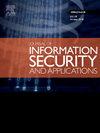A methodology for the experimental performance evaluation of Access Control enforcement mechanisms based on business processes
IF 3.8
2区 计算机科学
Q2 COMPUTER SCIENCE, INFORMATION SYSTEMS
Journal of Information Security and Applications
Pub Date : 2025-07-24
DOI:10.1016/j.jisa.2025.104158
引用次数: 0
Abstract
While the security analysis of Access Control (AC) policies has received a lot of attention, the same cannot be said for their enforcement. As applications become more distributed, centralized services a bottleneck, and legal compliance constraints stricter (e.g., the problem of honest but curious Cloud providers in the light of privacy regulations), the fine-tuning of AC enforcement mechanisms is likely to become more and more important. This is especially true in scenarios where the quality of service may suffer from computationally heavy security mechanisms and low latency is a prominent requirement. As a first step towards a principled approach to fine-tune AC enforcement mechanisms, this paper introduces a methodology providing the means to measure the performance of such mechanisms through the simulation of realistic scenarios. To do so, we base our methodology on Business Process Model and Notation (BPMN) workflows — that provide for an appropriate abstraction of the sequences of requests (e.g., access a resource, revoke a permission) sent toward AC enforcement mechanisms — to evaluate and compare the performance of different mechanisms. We implement our methodology and use it to evaluate three AC enforcement mechanisms representative of both traditional centralized — i.e., the Open Policy Agent (OPA) and the eXtensible Access Control Markup Language (XACML) — and decentralized AC — i.e., the CryptoAC tool.
一种基于业务流程的访问控制执行机制的实验性性能评估方法
虽然访问控制(AC)策略的安全分析受到了很多关注,但对其实施却并非如此。随着应用程序变得更加分布式,集中式服务成为瓶颈,法律遵从性约束更加严格(例如,根据隐私法规,诚实但好奇的云提供商的问题),AC执行机制的微调可能变得越来越重要。在服务质量可能受到计算量大的安全机制影响的场景中尤其如此,并且低延迟是一个突出的需求。作为调整交流执行机制的原则性方法的第一步,本文介绍了一种方法,通过模拟现实场景来测量这些机制的性能。为此,我们将我们的方法建立在业务流程模型和符号(BPMN)工作流的基础上——它为发送给AC强制机制的请求序列(例如,访问资源,撤销权限)提供了适当的抽象——以评估和比较不同机制的性能。我们实现了我们的方法,并使用它来评估三种代表传统集中式AC(即开放策略代理(OPA)和可扩展访问控制标记语言(XACML))和分散AC(即CryptoAC工具)的AC执行机制。
本文章由计算机程序翻译,如有差异,请以英文原文为准。
求助全文
约1分钟内获得全文
求助全文
来源期刊

Journal of Information Security and Applications
Computer Science-Computer Networks and Communications
CiteScore
10.90
自引率
5.40%
发文量
206
审稿时长
56 days
期刊介绍:
Journal of Information Security and Applications (JISA) focuses on the original research and practice-driven applications with relevance to information security and applications. JISA provides a common linkage between a vibrant scientific and research community and industry professionals by offering a clear view on modern problems and challenges in information security, as well as identifying promising scientific and "best-practice" solutions. JISA issues offer a balance between original research work and innovative industrial approaches by internationally renowned information security experts and researchers.
 求助内容:
求助内容: 应助结果提醒方式:
应助结果提醒方式:


